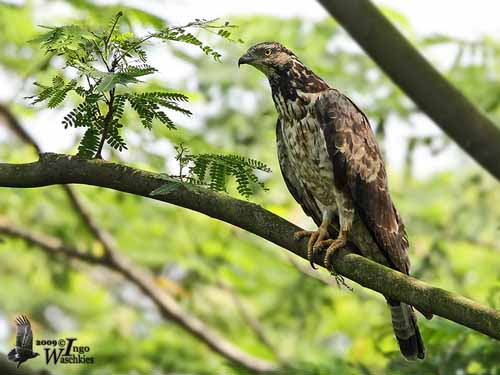
The third species is the Bat Hawk (Macheiramphus alcinus) of the genus Macheiramphus. This raptor has small bill and wide gape, adapted to its feeding habits. It has dark plumage with some white areas on the underparts and a conspicuous carpal joint visible in flight. The eyes are yellow with white eyelids.
This raptor lives in sub-Saharan Africa where it frequents evergreen forest and dense deciduous woodland, and extends to drier savannahs where it can find bats, and often enter towns.
It feeds primarily on bats which catches and ingests in a few seconds. It also captures small birds and large flying insects. It pursues its prey with fast flight. It is mainly crepuscular, and can even hunt by night.
They nest in large trees in lateral forks where they build a platform with sticks. The female lays only one egg and both parents incubate during 48 days. The young is fed by both adults and fledge at 65-67 days.
This species is usually resident, but some movements are observed towards NE Africa.
These raptors which form the first subgroup have peculiar feeding habits, different from other birds of prey. In spite of some usual preys, they feed on wasps, hornets, snails, bats, flying insects making them different, including in their hunting behaviour.
Text by Nicole Bouglouan
Photographers :
Roger Ahlman
Pbase Galleries Peru and Ecuador
Steve Garvie
RAINBIRDER Photo galleries
Patrick Ingremeau
TAMANDUA
Jean Marc Rabby
Des Ailes et des Plumes
Ingo Waschkies
My bird pictures on Pbase
Nicole Bouglouan
PHOTOGRAPHIC RAMBLE
Sources :
HANDBOOK OF THE BIRDS OF THE WORLD Vol 2 by Josep del Hoyo-Andrew Elliot-Jordi Sargatal - Lynx Edicions - ISBN: 8487334156
L’ENCYCLOPEDIE MONDIALE DES OISEAUX - Dr Christopher M. Perrins - BORDAS - ISBN: 2040185607
GUIDE DES RAPACES DIURNES – Europe, Afrique du Nord et Moyen-Orient de Benny Génsbol – Delachaux et Niestlé – ISBN : 2603013270
ENCYCLOPEDIE DES OISEAUX DE FRANCE ET D’EUROPE – de Peter Hayman et Rob Hume - Flammarion – ISBN : 2082009920
Cuckoo-hawks, Kites, Honey-buzzards
First subgroup
These birds of prey belong to the huge family Accipitridae, and form the first natural group within this family.
Three subgroups are recognized, according to the habits or the physical criterions of each species.
Most of these raptors are known to have scavenging or insectivorous habits, which probably are their primitive traits. But from this behaviour, several more predatory raptors have evolved towards other form of feeding, by catching and killing living preys, other birds or mammals.
The members of the first subgroup have peculiar physical trait. They lack the bony shield projecting above the eyes and giving them their elegant appearance. We often talk about the deep eyes of the large eagles, due to this bony overhang. But here, these birds have flatter forehead and face, very well adapted to their feeding behaviour.

The cuckoo-hawks are mainly resident in their range. Some movements from northern populations can be observed, and some seasonal and altitudinal dispersion occur according to the range.
The members of genera Pernis, Henicopernis and Leptodon are mainly wasp-eaters.
The typical Honey-buzzards have mostly small head, almost similar to doves or cuckoos, and lack the supraorbital ridge. They have slender bill and flat talons. Eyes are brown to yellow.
They show brown to grey-brown upperparts and mottled, barred or streaked underparts. The tail is conspicuously barred. But their coloration can be very variable.
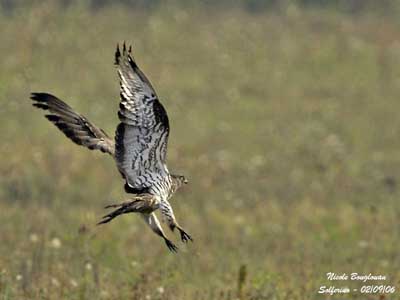
European Honey-buzzard - Pernis apivorus
Both species of genus Henicopernis frequent tropical rain forest, edges and close clearings in New Guinea and New Britain Island. They are mainly insectivorous, feeding on wasps and their larvae, arboreal lizards, small birds and mammals.
The breeding habits are poorly known, but the Long-tailed Buzzard (Helicopernis longicauda) nests in tall trees or even on cliff ledges.
Adults are probably sedentary in the range.
The three species of genus Pernis frequent forest, open wooded areas and forest edges. They feed primarily on wasps and hornets, larvae, pupae and adults, and honeycombs. They follow the wasps in flight to locate their nests and can catch them in the air. They watch them from perch, and remove the nests from trees, but also dig out the ground nests with the claws.
They perform display flights, and nest in trees of different species according to the range. Two eggs are usually laid and incubated by both parents during 32-35 days. The young fledge about 40-45 days after hatching.
Pernis apivorus
The Honey-buzzards are migratory. The European Honey-buzzard (Pernis apivorus) breeds in Western Europe and winters in equatorial Africa. The Crested Honey-buzzard (Pernis ptilorhyncus) breeds in Siberia and Japan and winters from SE Asia S to Indonesia. Only the northern populations move.
The Barred Honey-buzzard (Pernis celebensis) is sedentary in its range in the Philippines and Sulawesi.
These species are not currently threatened but the statuses are poorly known for the Crested and Barred Honey-buzzards.
Both members of genus Leptodon from South America are related to Honey-buzzards for their feeding preferences. They also eat wasps, hornets and honeycombs. Both have white underparts and dark upperparts. The white tail is broadly barred black. The head is grey to greyish-white with pale yellow eyes.
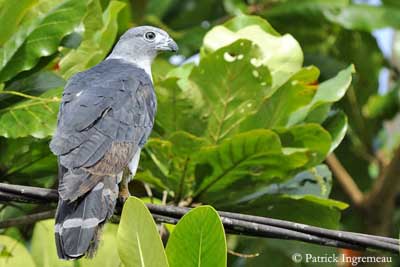
Grey-headed Kite
Leptodon cayanensis
They frequent the rain forest near water. They often hunt from exposed perch, catching many insects and their larvae, birds and their eggs, snakes, arboreal lizards, amphibians and molluscs.
They perform aerial displays during the breeding season and nest high in tree where two eggs are laid.
They seem to be sedentary in their range, where they are rare to uncommon. One species, the White-collared Kite (Leptodon forbesi) in critically endangered.
Three other species of three different genera belong to the first subgroup.
The American Swallow-tailed Kite (Elanoides forficatus) of genus Elanoides is an elegant raptor with black glossy blue upperparts and white head and underparts. It has a long, deeply forked tail and pointed wings.
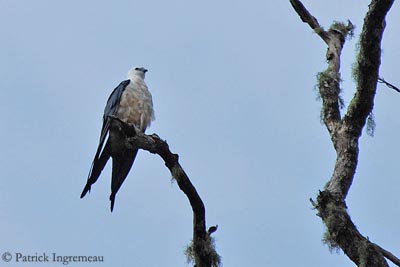
Elanoides forficatus
It frequents both swampy areas and forests in tropical and subtropical regions from SE of United States and Florida to Central and South America.
It catches insects on the wing in low glides above the canopy, but also takes small vertebrates, frogs, young birds and some fruits. It may catch hummingbirds while flying.
The male performs courtship feeding to the female before to copulate. They nest at treetop of tall trees, often with several pairs within a few hundred metres. One or two eggs are laid in the twig nest, and the incubation lasts 28 to 31 days. The young fledge between 40 and 53 days according to the range.
This species is migratory in N and S of the range and winters in South America. This bird is relatively common throughout its range.
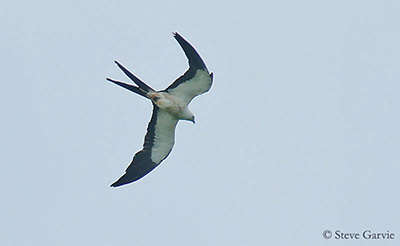
Elanoides forficatus
Crested Honey-buzzard
Pernis ptilorhyncus
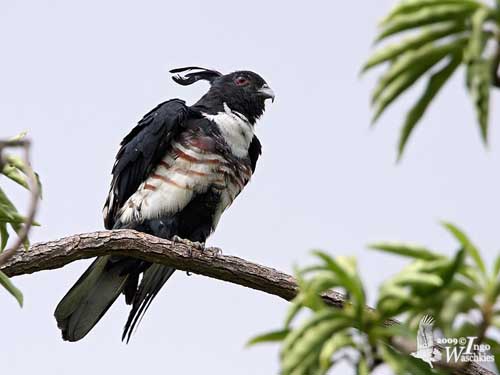
Aviceda leuphotes
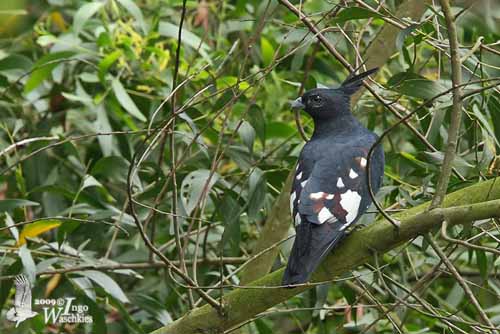
Aviceda leuphotes
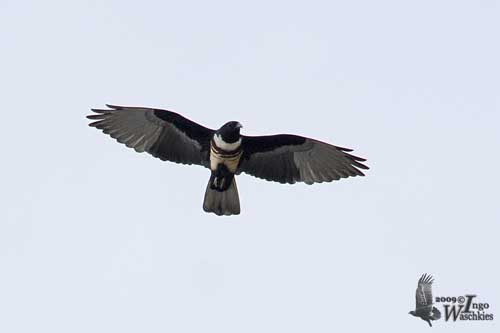
Aviceda leuphotes
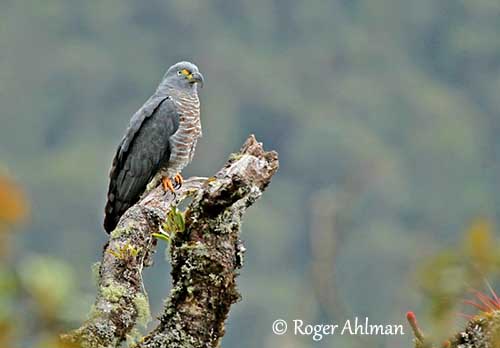
Chondrohierax uncinatus